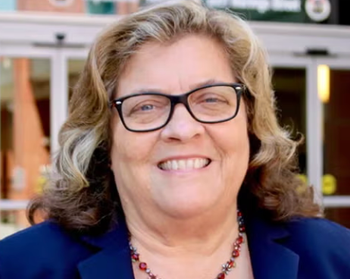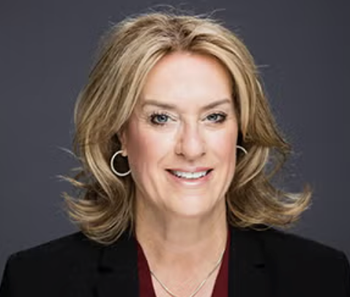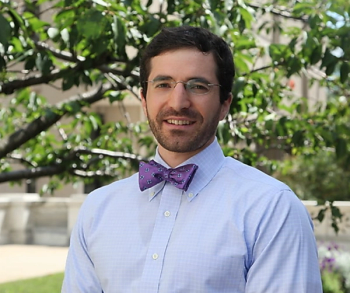
Can Health Professional Shortage Areas Be Alleviated Through Telehealth?
As a first world country known for access to top-rate medical services, how does the United States find itself with a quarter of the population experiencing distinct dislocation of critical care services?
More than 82 million people in the United States currently live in Health Professional Shortage Areas (HPSA)according to the
HPSA is calculated as the ratio between health providers and a particular area’s population. Classifications include geographic location, population served and available services. That puts roughly 25% of the U.S. population in regions without sufficient primary care, dental and mental healthcare providers.
As a first world country known for access to top-rate medical services, how does the United States find itself with a quarter of the population experiencing distinct dislocation of critical care services? According to the University of Southern California’s
An aging population. As the baby boomer population ages, this group is developing chronic health conditions, causing anincrease in their health care needs. The Health and Aging Policy Fellows estimatesthat by2030, the youngest baby boomers will have reached age 65, which will equate to 71 million people and 1 in 5 Americans. This increasing number of older patients in addition to the American Association of Medical College (AAMC)
A large aging and retiring heathcare workforce. The number of physicians meeting retirement eligibility is detailed in a study reporting that in 2016, 42% of physicians were aged 55 years old, meaning close to half of all U.S. physicians are in the at-risk demographic for COVID-19, a concern that has some doctors choosing to leave their professions or retire early rather than place their physical and financial health at risk. A survey by the California Medical Association revealed that currently 87% of doctors are financially concerned about their practices, despite eight of 10 offices having switched to telehealth options to accommodate patients in the midst of the COVID-19 pandemic. In addition, some offices have had to curtail staff due to a one-third drop in in-office visits. Other practices are facing revenue losses reaching 50%, while specialties have been especially hard hit by the repercussions of the pandemic, with some seeing losses reaching nearly 40%.
The rising incidence of chronic diseases. According to the CDC,
A finite number of educational programs. Magnifying the previous three factors is a report by the
What Can Be Done?
Currently, several organizations are taking action to alleviate these anticipated shortages takingplace in HPSAs, and indeed, across the healthcare industry. Under the U.S. Department of Health and Human Services, the Health Resources and Services Administration (HRSA) assistswith matching healthcare professionals to jobs in HPSAs, which helps first-rate carefor people living in isolated areas who are financially burdened or medically at risk. Managedby HRSA, the Bureau of Health Workforce provides these healthcare workers, many of whom are nurses, with loan forgiveness, scholarships,and access to training and grants.
Other organizations providing HPSAs with quality healthcare include the following:
1. The National Health Service Corp (NHSC) focuses on increasing the number of healthcareworkers in HPSAs. It offers scholarships to nursing and other healthcare students and loan repayment for licensedhealthcare providers, including those in behavioral health, for a two-year commitment to work in an approved facility located in HPSAs that meet the needs of underserved populations.
2. Love Volunteers matches registered nurses and nursing student volunteers with one of33 medical internship programs based on their interests, skills and experience,including in substance use rehabilitation and public health services.
3. AgriSafe Network offers a nursing program for healthcare workers interested in servingagricultural workers. The AgriSafe Nurse Scholar program offers training in a niche specialty, focusing on treatment and prevention specific to those involved in agricultural work.
In May 2019, the American Medical Association named its first Chief Health Equity Officer to lead a task force focused on addressing practices, processes and innovation forHPSAs.
Technologies Including Telehealth Bridge the Gap
The recent COVID-19 pandemicthrust patients and providers into the already burgeoning prospect of remote solutions for limited healthcare access (patients struggling with distance and transportation issues as well as socio-economic variances that make them unable to access other health care options.)
In 2020, state legislatures worked to loosen the outdated and stringent regulations that limitreimbursement for telehealth visits. Because it is delivered quickly and easily, telehealth has become popular with people of all ages, notably for the convenience in obtaining appointments, the efficiency of the zero-commute and the comfort of meeting from home. A study from theJournal of General Internal Medicinefound that in a poll of 2,052 adults aged 20 and older, only15% were using telehealth for behavioral health when the pandemic began, but this percentage rose to 53.6% by May 2020. And ithas been working well. In a National Poll on Healthy Aging, 72% of2,074 participants aged 50 to 80 showed interest in follow-up telehealthappointments with their providers.
Virtual medical visits are not feasible for all physical tests (like lab draws and cardiacstress tests), but for behavioral health, the security, affordability and convenience of “zooming in” might be just what the doctor ordered. And it certainly eases the strain in areas with health professional shortages, making timely and quality intervention a possibility in remote areas and with aging populations.
Health Professional Shortage Areas present a complex logistic issue requiring a multifaceted solution; therefore, healthcare professionals continue to piece together permanent answers to the increasing demand for equitable healthcare services.
About the Author
Loraine Daugherty is chief executive officer at Integrated Medical Case Solutions (IMCS) Group, soon to be Ascellus Behavioral Health, where she provides analytical decision-making, strategic planning and executive leadership. IMCS – Integrated Medical Case Solutions – is the leading provider of work-related trauma prevention and treatment with a proven track record of transforming workers’ compensation cases with notable success in early return-to-work outcomes.







































